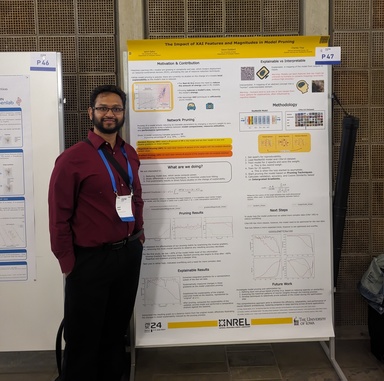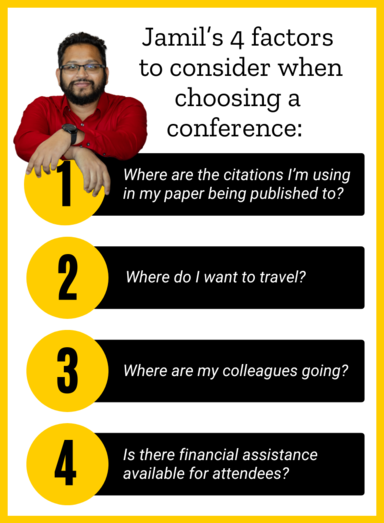From traveling to conferences to continuing and forging new research collaborations, fourth-year CS PhD student Jamil Gafur had an eventful summer.

In June, Jamil presented at the Platform for Advanced Scientific Computing Conference (PASC24) in Zurich, Switzerland, where he won the prestigious SIGHPC award. His recognized poster, “Sculpting Precision: Unveiling the Impact of eXplainable Features and Magnitudes in Neural Network Pruning” explores innovative techniques for energy-efficient and explainable artificial intelligence (AI). Jamil's findings highlight how integrating eXplainable Artificial Intelligence (XAI) in model pruning can significantly enhance compression rates without compromising accuracy. This research also earned Jamil third place for best poster at the University of Iowa’s Jakobsen Graduate Development Series Poster Presentation in March.
Jamil said a standout moment from PASC24 was when he finally met one of his mentors in person after seven years of collaboration.
“It was a fantastic experience,” he shared.
Plus, thanks to the conference covering his travel expenses, Jamil decided to orchestrate a family trip to the Swiss Alps and surprised his mom.
“She thought she was just picking [my brother and I] up, but we had packed her bags and brought her along,” Jamil said.

Following PASC24, Jamil attended the Practice and Experience in Advanced Research Computing Conference (PEARC24) in Rhode Island. PEARC24 marked Jamil’s first time presenting a research paper, having previously only given talks and poster sessions. The paper, “Adversarial Robustness and Explainability of Machine Learning”, was a joint project between Jamil, his advisor, Steve Goddard, and his collaborator at the Cornell Institute of Biotechnology, William Lai. The team developed a Python package that applies explainability algorithms to test neural networks, ensuring they accurately process information.
Jamil is also conducting research with Lai to validate neural networks for identifying cancerous regions, ensuring these models effectively learn and make accurate predictions.
“Machine learning can sometimes yield unpredictable results, so our focus is on ensuring the networks are performing optimally," Jamil explained.
To conclude his summer travels, Jamil participated in the Open Science Grid (OSG) School at the University of Wisconsin-Madison in August. Jamil said he appreciated connecting with fellow enthusiasts of resource-efficient machine learning and noted that he even got to spend some time boating on Lake Mendota while in town.
Jamil is continuing to work on several major projects this fall. He is helping plan the 2nd Annual Conference of the United States Research Software Engineer Association (US-RSE’24), which will take place in Albuquerque, New Mexico from October 15-17. As a member of the student program committee, Jamil said he is looking forward to assisting students with creating digital portfolios and organizing events like the ice cream social and mentor/mentee lunch. Notably, Jamil has been a member of the United States Research Software Association for six years and recently received a “unicorn status” certificate in recognition of his contributions to the organization’s community. Jamil said he started the organization’s meme channel on Slack, which is one of its most active groups. Going forward, Jamil plans to facilitate discussions with other members in the organization on leveraging AI and machine learning in research through his new group focused on these technologies.
Along with US-RSE’24, Jamil will be presenting his research, “The Pruning Playbook: Secrets to Leaner, Meaner Neural Networks!”, at the 10th Iowa Computer Science Graduate Research Symposium on November 8.
As for any advice he would give to those attending conferences, Jamil emphasizes the importance of enjoying the experience.
“Not everything has to be about research,” Jamil said. “Sometimes, just connecting with others and having a good conversation is what truly matters.”



